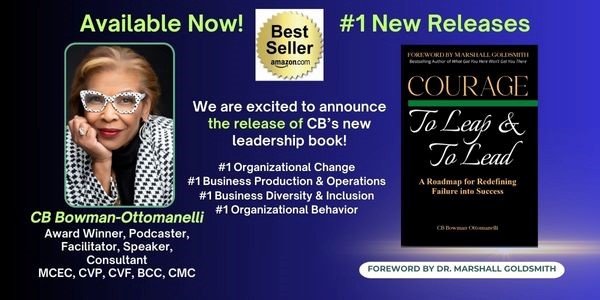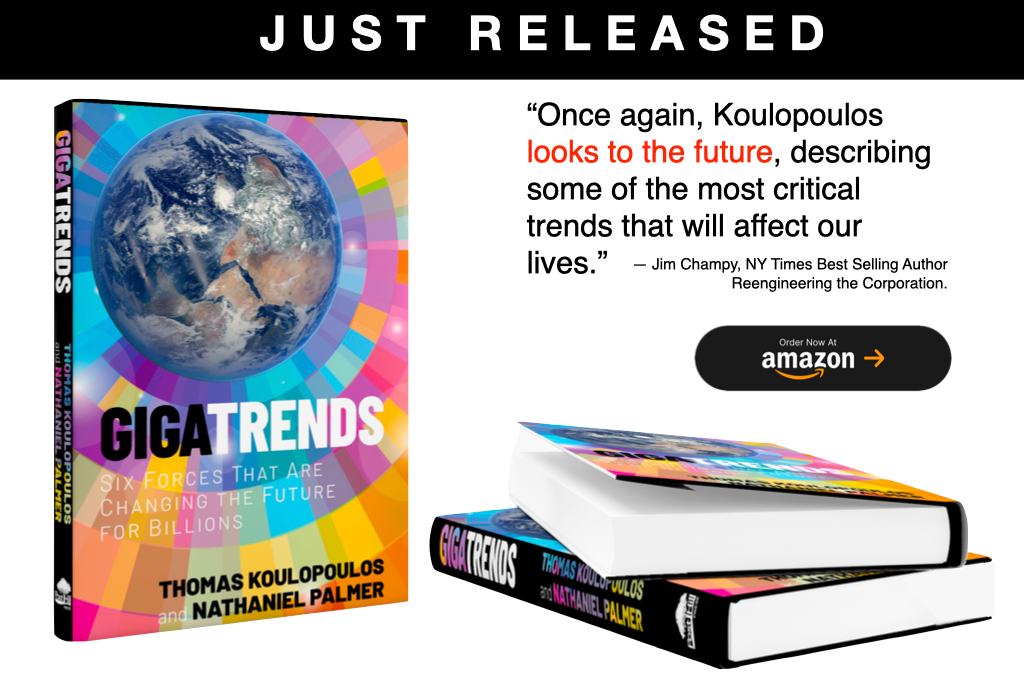This week the IBM Center for The Business of Government posted a blog by Katherine Barrett, Richard Greene, and Don Kettl announcing the release of their monograph, The Little Guide to Writing for Impact: How to Communicate Research in a Way that People Will Read.
The subtitle is key. The authors acknowledge the importance that government officials write well with the intent to produce government communication that the public can understand and use. However, they are even more worried about a connected issue: “too many people with great academic training are writing about powerful ideas, backed by years of research, that are obscure at best and incomprehensible at worst.” The book is aimed at those people with big ideas who want people to read them.
As I read this blog, it reminded me of Aaron Wildavsky’s excellent book of essays, Craftways: On the Organization of Scholarly Work.Wildavsky, a premier figure in the field of public administration, was a true intellectual craftsman: a superb prose stylist as well as an acute mind. He truly believed that quality writing is ineluctably linked to quality of thought. This compilation of essays is his meditation on craftsmanship offering insight less on the mechanics of writing and more on the craft of communicating. His focus on craftsmanship continues to make his work on such diverse topics as political culture, policy analysis, implementation, budgeting, and public administration approachable, engaging, and revelatory. I’d like to share some of his thoughts on the craft of writing and how he approached it throughout his career. It is intended as a nice and worthwhile complement to the guidance offered today by Barrett, Green, and Kettl.
“In the Same Place, at the Same Time, and in the Same Way”
This is the essay that started all. It began Wildavsky’s effort to state the rules of writing he followed so that others might adapt them for their own use. “Were it not for the warm reception accorded this [essay], I might not have continued developing this genre,” he admits. He believed that the basic elements of craftsmanship in social science were not being taught nor observed close to give students a sufficiently precise idea of how to do their scholarly work. Here are some insights in his own words.
Bridging that Chasm Between the Thought and the Deed. Even if the thought is in you, there is no guarantee it will come out. That gulf can only be bridged by taking seriously the task of organizing work.
Developing Appropriate Habits. In addition to having things to say, the ability to write depends on developing appropriate habits, finding the right kind of place, obtaining useful criticism, learning how to arrange material, working out suitable physical style, combining teaching with research, and overcoming temptations to divert energies.
Importance of Habit and Rhythm. One cannot overestimate the importance of habit and rhythm: Try to work in the same place, at the same time, and in the same way. Once the rhythm of work begins to take hold, it carries one through fallow periods. It keeps you going through the inevitable descriptive passages that contain nothing new but are essential for the story you are telling or the point you wish to make.
‘I write when sit and think when I walk.’ [Wildavsky liked to write for an hour or two then walk and think over the next steps.] There is something about releasing the physical energy kept under control while writing that makes it easier to begin again. It is a mistake to push oneself when the flesh is weak and the spirit unwilling. Writing is not only a mental but a physical process in which a sense of though connects thought with word.
Writing is a Process of Self-Discovery. That sometimes leads you to say more than you knew was in you or carries you far from original intentions. That is why I have learned not to worry about introductions to books or essays. There is no sense in trying too hard to get them “right” because you do not know what that will be until you finish. The purpose of a beginning is to get you started; when the work is completed, you can go back to the beginning and tell the reader not what you thought you were going to say but what you ended up saying.
“Rationality in Writing: Linear and Curvilinear”
In this essay, Wildavsky introduces two distinctly different ways to approach writing. He describes how he used each of these approaches in writing two of his book. However, the ultimate point of the essay is to underscore the connection between thought and writing.
Writing as an Integral Part of Thinking. A writer by vocation is a person who cares about the quality and craft of writing as inseparable from the content of whatever they are trying to communicate. Indeed, for me writing has become an integral part of thinking. I don’t know what I think until I have tried to write it. Sometimes the purpose of writing is to discover whether I can express what I think I know; if it cannot be written, it is not right. Other times I write to find out what I know; writing becomes a form of self discovery. I hope to learn more than was in me when I started. Few feelings compare with the exhilaration of discovering a thought in the writing that was not in the thinking.
Writing Should Resonate with the Subject Matter. Making the form fit the substance so style reinforces content, is what craftmanship is about. However, the style should also fit the author, for style is a personal signature. It should be possible to recognize the author from the style. However, it is one thing to want to read a piece because of the author and quite another to learn more about the author than the subject.
Linear or Curvilinear – “Straight on” or “Roundabout”. Books and essays can be written linearly, straight-on according to plan, with one topic following another in orderly sequence. They may also be written in curvilinear fashion much like fitting together the parts of a puzzle except that all pieces are not available at the beginning but only as one goes along, and the final shape is made up by the pieces instead of being fit into a predetermined form. Though process may be roundabout, the story should be linear. I have written both ways and each has its pleasures and pitfalls. Linear is easier, but it must be done consecutively, the relationship among the parts being retained, so that time is a critical constraint. Curvilinear is more rewarding because of the surprise at creating something new.
This blog shares only a snapshot of some of the salient insights about the craftsmanship of writing and the organization of scholarly pursuits as documented by Aaron Wildavsky. Craftways: On the Organization of Scholarly Work has even more to offer its reader exploring such diverse but complementary topics as reading with a purpose, working with others, organizing your time wisely, and how best to do interviews. Throughout these essays, Wildavsky tries to transmute the personal into the general. From his own experience coupled with his observation of others, he offers advice on the craft aspects of scholarship and writing. He admits this advice may be inadequate or out of place, so when in doubt, he advises the reader to do it their own way. In the acknowledgment, he makes another worthwhile suggestion for those who are interested in exploring craftways to checkout C. Wright Mills’ exemplary “On Intellectual Craftsmanship.”





 Weekly Roundup: June 23-27, 2025
Weekly Roundup: June 23-27, 2025
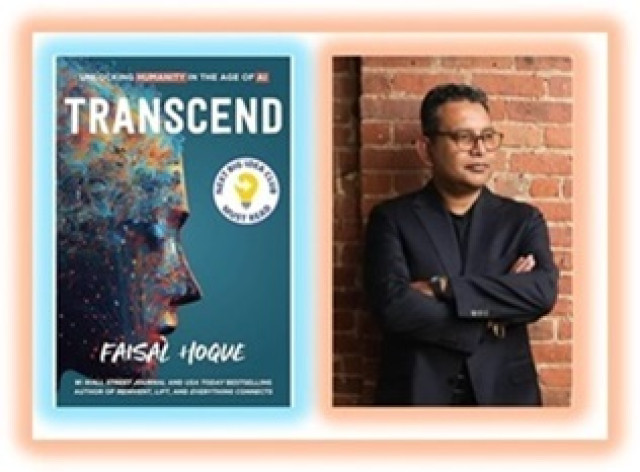 Unlocking Humanity in the Age of AI: Insights and Leadership Lessons from Faisal Hoque
Unlocking Humanity in the Age of AI: Insights and Leadership Lessons from Faisal Hoque
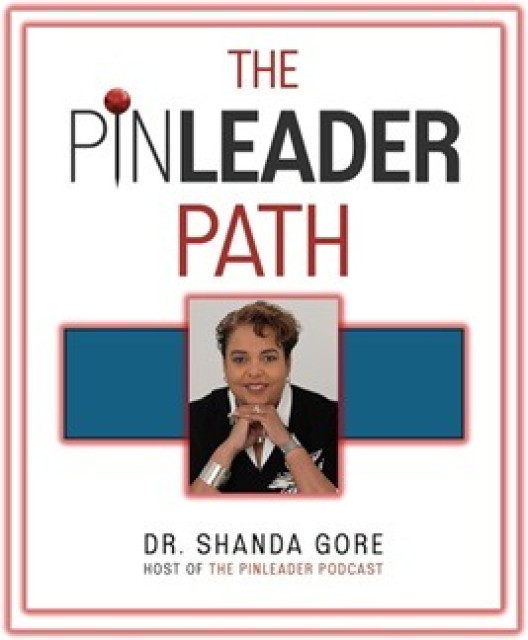 The PinLeader Path: Navigating Leadership in Government with Precision and Purpose
The PinLeader Path: Navigating Leadership in Government with Precision and Purpose
 Weekly Roundup: June 9-13, 2025
Weekly Roundup: June 9-13, 2025
 Technology Transformation in Connecticut State Government: Insights from CIO Mark Raymond
Technology Transformation in Connecticut State Government: Insights from CIO Mark Raymond
 Weekly Roundup: June 2-6, 2025
Weekly Roundup: June 2-6, 2025
 Weekly Roundup: May 26-30, 2025
Weekly Roundup: May 26-30, 2025
 Leading in a World of Metaruptions: Reflections on Disruption with Roger Spitz
Leading in a World of Metaruptions: Reflections on Disruption with Roger Spitz
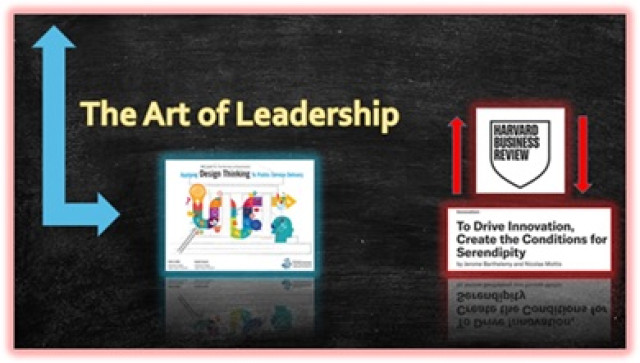 Fostering Innovation in Government: Leveraging Serendipity and Design Thinking
Fostering Innovation in Government: Leveraging Serendipity and Design Thinking
 Weekly Roundup: May 5-9, 2025
Weekly Roundup: May 5-9, 2025
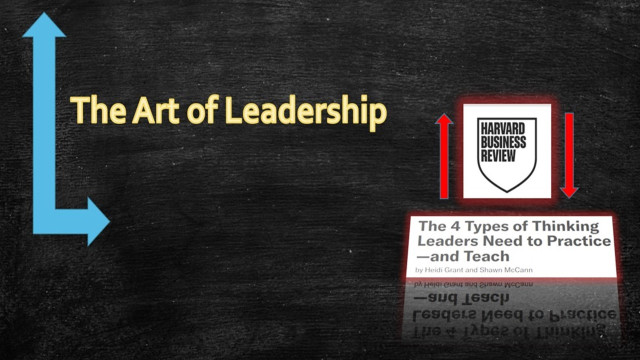 Mastering the Art of Leadership: Four Types of Thinking Government Executives Must Embrace
Mastering the Art of Leadership: Four Types of Thinking Government Executives Must Embrace
 Resilient Leadership: Strategic Questions to Lead Through Uncertainty
Resilient Leadership: Strategic Questions to Lead Through Uncertainty
 Resilient Leadership: Strategic Questions to Lead Through Uncertainty
Resilient Leadership: Strategic Questions to Lead Through Uncertainty
 Weekly Roundup: April 28-May 2, 2025
Weekly Roundup: April 28-May 2, 2025
 Balancing Trust and Innovation: Insights on AI and Governance
Balancing Trust and Innovation: Insights on AI and Governance
 Augmenting the Future: Navigating AI in Public Administration
Augmenting the Future: Navigating AI in Public Administration
 Articles & insights of interest in public management & leadership for the week ending April 11, 2025
Articles & insights of interest in public management & leadership for the week ending April 11, 2025
 Mastering the Art of Leadership: Four Types of Thinking Government Executives Should Embrace
Mastering the Art of Leadership: Four Types of Thinking Government Executives Should Embrace
 Artificial Intelligence
Artificial Intelligence
 Articles & insights of interest in public management & leadership for the week ending March 28, 2025
Articles & insights of interest in public management & leadership for the week ending March 28, 2025
 Shaping Tomorrow: Strategic Thinking for Government Leaders - A Conversation with John Hillen
Shaping Tomorrow: Strategic Thinking for Government Leaders - A Conversation with John Hillen
 Articles & insights of interest in public management & leadership for the week ending March 21, 2025.
Articles & insights of interest in public management & leadership for the week ending March 21, 2025.
 Building Bridges Through Disagreement: Leadership Lessons from Conflict Resilience
Building Bridges Through Disagreement: Leadership Lessons from Conflict Resilience
 Articles & insights of interest in public management & leadership for the week ending March 14,, 2025
Articles & insights of interest in public management & leadership for the week ending March 14,, 2025
 Articles & insights of interest in public management & leadership for the week ending March 7, 2025.
Articles & insights of interest in public management & leadership for the week ending March 7, 2025.

 Transforming the Business of Government: Insights on Resiliency, Innovation, and Performance
Transforming the Business of Government: Insights on Resiliency, Innovation, and Performance
 Leveraging the 80/20 Rule to Become an Effectively Leader: A Conversation with Bill Canady
Leveraging the 80/20 Rule to Become an Effectively Leader: A Conversation with Bill Canady
 Mastering the Complexities of Strategic Leadership: A Conversation with Dr. John Hillen, author, The Strategy Dialogues
Mastering the Complexities of Strategic Leadership: A Conversation with Dr. John Hillen, author, The Strategy Dialogues
 Conflict Resilience: A Conversation with Robert Bordone and Dr. Joel Salinas M.D
Conflict Resilience: A Conversation with Robert Bordone and Dr. Joel Salinas M.D

 Scaling for Mission Delivery: Exploring Why Some Ideas fail while Others Change the World
Scaling for Mission Delivery: Exploring Why Some Ideas fail while Others Change the World
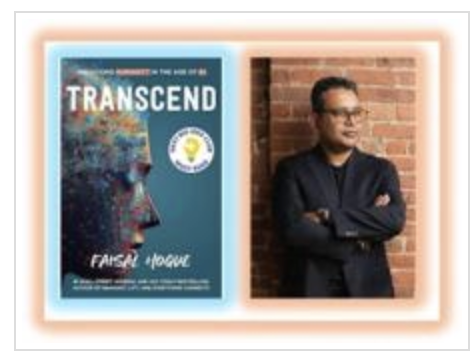 Transcend: Unlocking Humanity in the Age of AI – A Conversation with Faisal Hoque
Transcend: Unlocking Humanity in the Age of AI – A Conversation with Faisal Hoque
 Transforming the Business of Government: Insights on Resiliency, Innovation, and Performance
Transforming the Business of Government: Insights on Resiliency, Innovation, and Performance
 Turning the Power of Mindset into Action: Drive Learning & High Performance With a Growth Mindset Culture
Turning the Power of Mindset into Action: Drive Learning & High Performance With a Growth Mindset Culture
 Exploring the Application and Use of Extended Reality: A Conversation with Annie Eaton author of THE EXTENDED REALITY BLUEPRINT
Exploring the Application and Use of Extended Reality: A Conversation with Annie Eaton author of THE EXTENDED REALITY BLUEPRINT
 Leveraging the Upside of Disruption with Terence Mauri
Leveraging the Upside of Disruption with Terence Mauri
 NAPA Fall Meeting Conversation on Technology and Innovation with Laura Stanton
NAPA Fall Meeting Conversation on Technology and Innovation with Laura Stanton
 NAPA Fall Meeting Conversation on Public Collaboration and East-West Relations with Suzanne Vares-Lum
NAPA Fall Meeting Conversation on Public Collaboration and East-West Relations with Suzanne Vares-Lum
 Exploring the Evolution of the Military Health System
Exploring the Evolution of the Military Health System
 Fukuyama and DeSeve on Public Service and Agile Strategies – NAPA Fall Meeting Series
Fukuyama and DeSeve on Public Service and Agile Strategies – NAPA Fall Meeting Series
 SPECIAL EDITION OF THE BUSINESS OF GOVERNMENT HOUR – INSIGHTS ON LEADERSHIP, MINDSET, AND THRIVING ON DISRUPTION
SPECIAL EDITION OF THE BUSINESS OF GOVERNMENT HOUR – INSIGHTS ON LEADERSHIP, MINDSET, AND THRIVING ON DISRUPTION
 DR. JEFF KARP, AUTHOR OF LIT – LIFE IGNITION TOOLS: USE NATURE’S PLAYBOOK TO ENERGIZE YOUR BRAIN, SPARK IDEAS, AND IGNITE ACTION
DR. JEFF KARP, AUTHOR OF LIT – LIFE IGNITION TOOLS: USE NATURE’S PLAYBOOK TO ENERGIZE YOUR BRAIN, SPARK IDEAS, AND IGNITE ACTION
 STRATEGIES AND INSIGHTS FOR LEADING THROUGH THE UNEXPECTED – THE NAPA FALL MEETING SERIES
STRATEGIES AND INSIGHTS FOR LEADING THROUGH THE UNEXPECTED – THE NAPA FALL MEETING SERIES
 LEADING THE NATIONAL ACADEMY OF PUBLIC ADMINISTRATION: A CONVERSATION WITH TERRY GERTON, PRESIDENT & CEO, NAPA
LEADING THE NATIONAL ACADEMY OF PUBLIC ADMINISTRATION: A CONVERSATION WITH TERRY GERTON, PRESIDENT & CEO, NAPA
 DISRUPT WITH IMPACT: ACHIEVING SUCCESS IN AN UNPREDICTABLE WORLD
DISRUPT WITH IMPACT: ACHIEVING SUCCESS IN AN UNPREDICTABLE WORLD
 SECURING AMERICA’S FUTURE: A CONVERSATION WITH DAVE WALKER, AUTHOR OF AMERICA IN 2040: STILL A SUPERPOWER? A PATHWAY TO SUCCESS.
SECURING AMERICA’S FUTURE: A CONVERSATION WITH DAVE WALKER, AUTHOR OF AMERICA IN 2040: STILL A SUPERPOWER? A PATHWAY TO SUCCESS.
 EXPERTS IN GOVERNMENT: A CONVERSATION WITH PROF. DON KETTL
EXPERTS IN GOVERNMENT: A CONVERSATION WITH PROF. DON KETTL
 LEADING THE DEFENSE HEALTH AGENCY: A CONVERSATION WITH LT. GENERAL TELITA CROSLAND, M.D., DIRECTOR, DHA
LEADING THE DEFENSE HEALTH AGENCY: A CONVERSATION WITH LT. GENERAL TELITA CROSLAND, M.D., DIRECTOR, DHA
 TRANSFORMATIVE POTENTIAL OF DIGITAL DATA: A CONVERSATION WITH PROF. CRISTINA ALAIMO, CO-AUTHOR, DATA RULES: REINVENTING THE MARKET ECONOMY
TRANSFORMATIVE POTENTIAL OF DIGITAL DATA: A CONVERSATION WITH PROF. CRISTINA ALAIMO, CO-AUTHOR, DATA RULES: REINVENTING THE MARKET ECONOMY
 EXPLORING THE IT STRATEGY AT THE U.S. AIR FORCE RESEARCH LABORATORY: A CONVERSATION WITH ALEXIS BONNELL, CIO & DIRECTOR DIGITAL CAPABILITIES DIRECTORATE, AFRL
EXPLORING THE IT STRATEGY AT THE U.S. AIR FORCE RESEARCH LABORATORY: A CONVERSATION WITH ALEXIS BONNELL, CIO & DIRECTOR DIGITAL CAPABILITIES DIRECTORATE, AFRL
 Leveraging the Upside of Disruption with Terence Mauri
Leveraging the Upside of Disruption with Terence Mauri























 Resilient Leadership: Strategic Questions to Lead Through Uncertainty
Resilient Leadership: Strategic Questions to Lead Through Uncertainty
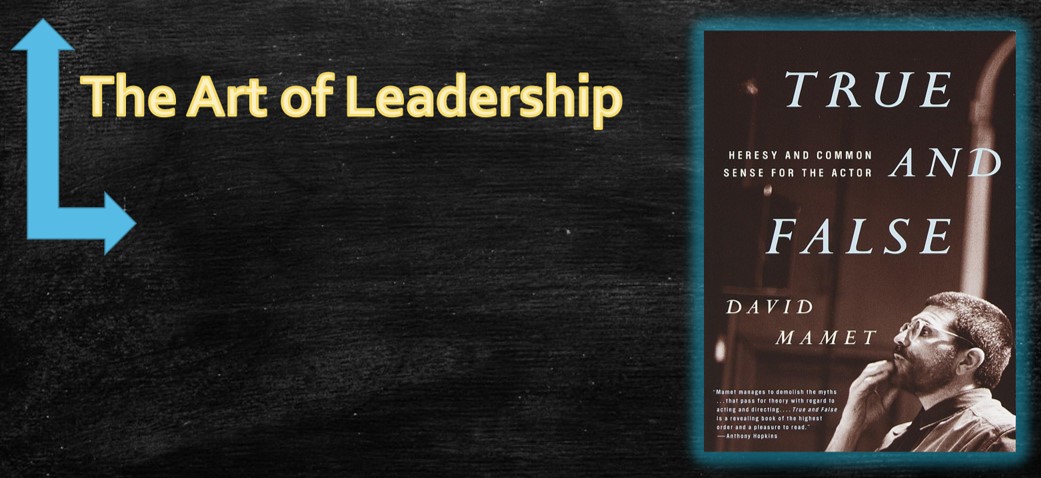 Leadership Lessons from David Mamet's "True and False: Heresy and Common Sense for the Actor"
Leadership Lessons from David Mamet's "True and False: Heresy and Common Sense for the Actor"
 Aaron Wildavsky On Writing and Craftsmanship
Aaron Wildavsky On Writing and Craftsmanship












